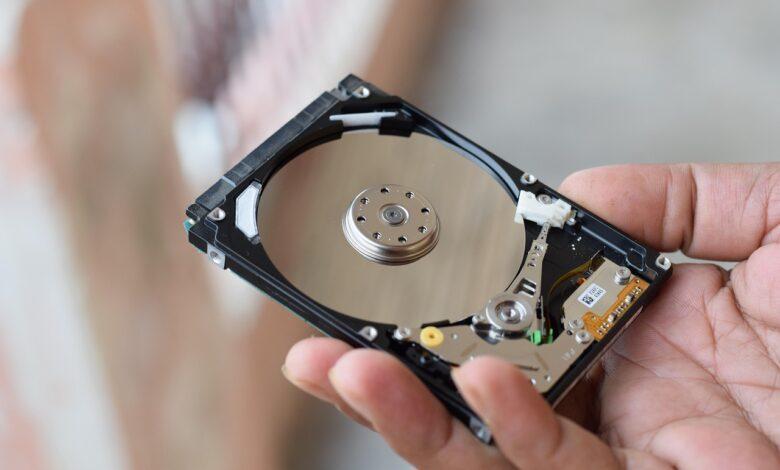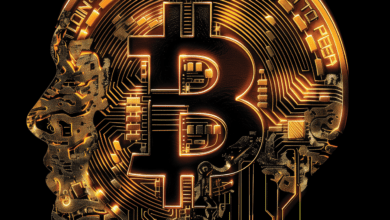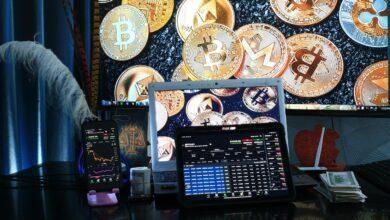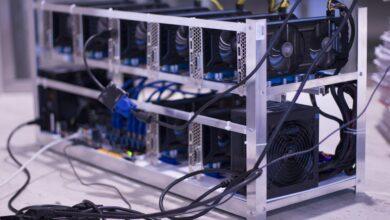Upgrade Wisely – Timing Your Hardware Investments

In the ever-evolving landscape of technology, the necessity for hardware upgrades is not merely a matter of keeping pace; it is an essential strategy for enhancing performance and ensuring longevity in one’s setup. The intricate dance between software demands and hardware capabilities often reveals moments where a timely investment can yield significant improvements. Understanding when to make these investments–and why–becomes critical as we navigate through an array of equipment options and system configurations.
As we delve into the justifications for boosting our hardware, we must consider several factors that contribute to optimal performance. Technology updates frequently introduce new features and enhancements that may stretch the limits of existing systems. In such cases, upgrades become a necessary response to not only maintain functionality but also to harness the full potential of new advancements. This leads us to explore the crucial timing of these decisions, as waiting too long can result in diminished performance and missed opportunities.
Moreover, improvements in hardware are not solely driven by the need for speed or capacity; they are also influenced by the evolving nature of user requirements and professional demands. As tasks become more complex, whether in gaming, data analysis, or content creation, the justification for investing in superior equipment becomes increasingly apparent. Recognizing these pivotal moments allows us to make informed decisions about our configurations, ensuring that our systems remain robust and responsive to future challenges.
Ultimately, embracing hardware upgrades is an act of foresight–a deliberate choice to invest in oneself and one’s work environment. By understanding when and why to enhance our setups, we empower ourselves with the tools needed for success in an age defined by rapid technological progress. This article will guide you through the rationale behind these investments, providing insights into optimal moments for upgrades and the compelling reasons that underscore their necessity.
Understanding Hardware Upgrades: Optimal Moments and Justifications for Enhancing Your Setup
In the rapidly evolving landscape of technology, understanding when and why to invest in hardware upgrades is a critical skill for any professional. The first and foremost reason for considering enhancements to your setup lies in performance improvements. As software applications advance, they often require more robust hardware capabilities to function efficiently. This necessity becomes increasingly apparent during high-demand tasks, such as cryptocurrency trading, where milliseconds can mean the difference between profit and loss. Recognizing the optimal moments for upgrades can significantly impact your operational efficiency.
Timing plays a vital role in decisions regarding hardware investments. For instance, waiting for the release of new technology can be a strategic move; however, it can also lead to missed opportunities if your current equipment is limiting your performance. A well-timed upgrade, particularly just before significant software updates or market shifts, allows professionals to optimize their systems and stay ahead of the curve. Assessing the lifecycle of your current hardware–considering factors such as age, compatibility with upcoming software, and overall system performance–provides valuable insights into when an investment is warranted.
Justifications for upgrading your hardware extend beyond mere performance metrics. Consider the implications of system reliability; outdated equipment may lead to increased downtime due to failures or inefficiencies. Investing in enhancements not only boosts immediate performance but also contributes to long-term stability and productivity. When systems are reliable, professionals can focus on their core activities rather than troubleshooting hardware issues, making the justification for upgrades even more compelling.
Moreover, advancements in technology often bring about significant improvements in energy efficiency and thermal management. Newer components tend to consume less power while providing superior performance compared to their predecessors. This enhancement translates into cost savings over time–not only through reduced electricity bills but also by prolonging the lifespan of your equipment. Analyzing these factors can provide a solid justification for investing in new hardware that improves both performance and overall system sustainability.
The landscape of cryptocurrency markets exemplifies the need for constant vigilance regarding hardware capabilities. As mining algorithms evolve and trading platforms become more complex, the demands placed on hardware configurations increase correspondingly. Professionals must remain attentive to these changes and evaluate whether their current setup can handle new challenges effectively. An investment in upgraded equipment tailored to specific needs can yield substantial returns in such a volatile environment.
In summary, understanding hardware upgrades involves a multifaceted approach that considers performance improvements, timing, justifications for investment, and technological advancements. By evaluating these factors holistically, professionals can make informed decisions that enhance their setups effectively. Whether one is aiming for better trading results or seeking greater efficiency in everyday tasks, recognizing the right moments to invest in hardware upgrades is essential for maintaining a competitive edge in today’s fast-paced technological landscape.
Signs You Need an Upgrade: Optimal Moments and Justifications for Enhancing Your Setup
In the rapidly evolving world of technology, recognizing the signs that you need an upgrade is crucial for maintaining optimal performance in your hardware setup. One of the primary indicators is a noticeable decline in system performance. For instance, if tasks that once executed seamlessly begin to lag, or if software applications routinely crash or freeze, these are clear signals that your current configuration may no longer suffice. Recognizing these moments is essential; they serve as justifications for investing in enhancements to ensure your equipment can handle the demands of modern applications.
Another significant reason for considering an upgrade relates to compatibility with new technology updates. As software developers release new versions of their products, they often require more robust hardware to function effectively. If you find yourself unable to utilize the latest features due to outdated equipment, it may be time to reassess your investment in hardware. This not only enhances your user experience but also ensures you are aligned with industry standards and security protocols, which are paramount in fields such as cryptocurrency trading and analysis.
Timing plays a critical role in determining when to invest in hardware upgrades. Traditionally, the best moments to enhance your setup coincide with major technological advancements or product releases. For example, the launch of a new graphics card or processor can signify an optimal moment for upgrading. Staying attuned to these developments allows you to make informed decisions about enhancing your configuration. Evaluating market trends and technological forecasts can also guide you toward strategic investments that boost performance.
Moreover, evaluating the cost of potential upgrades against the benefits they offer is a vital component of any decision-making process regarding system improvements. If your current setup hinders productivity or leads to frequent downtime, the justification for upgrading becomes evident. The financial implications of lost productivity should be weighed against the costs associated with new hardware to provide a clearer picture of the value added through upgrades.
In addition to performance and compatibility considerations, one must also assess future needs when contemplating hardware enhancements. If your work environment is evolving–whether due to increased data requirements, more complex tasks, or a shift toward remote operations–the rationale for investing in improved equipment strengthens significantly. Anticipating these demands allows you to proactively enhance your setup rather than reacting to crises as they arise.
Finally, it’s essential not only to recognize when it’s time for an upgrade but also to understand why such investments are necessary. Whether it’s for improved performance in trading algorithms, faster data processing capabilities, or enhanced graphical rendering for analytical tools, each enhancement serves a specific purpose that aligns with both personal and professional goals. By making informed choices based on systematic evaluations of needs and available technology updates, you empower yourself with a setup capable of thriving amid constant change in the digital landscape.
Benefits of Investing in Hardware
Investing in hardware is not merely an act of consumerism; it is a strategic decision grounded in the pursuit of enhanced performance and efficiency. The justification for such investments often stems from the need to keep pace with rapidly evolving technology. As software applications become increasingly demanding, the necessity for robust hardware upgrades becomes apparent. These enhancements can lead to significant system improvements, allowing users to execute tasks with greater speed and reliability. By prioritizing these upgrades, one can ensure that their setup remains competitive and capable of handling future challenges.
Timing plays a crucial role in determining when to invest in hardware upgrades. Optimal moments for enhancement typically align with the introduction of new software that requires more processing power or memory than your current configuration can provide. For instance, if you find that your system struggles during routine operations or experiences frequent slowdowns, this is a clear indication that an upgrade is warranted. Moreover, external factors such as market trends in cryptocurrency mining or trading software may also influence the timing of your investments, making it essential to stay informed about technological developments.
Reasons for boosting your hardware configuration extend beyond immediate performance needs. Upgrading equipment not only improves system responsiveness but also extends the longevity of your investment. In a world where technology becomes obsolete at an alarming rate, proactive enhancements can mitigate risks associated with system failures and downtime. Furthermore, improved hardware can lead to better energy efficiency, reducing operational costs over time–a consideration that is particularly relevant for those involved in resource-intensive activities like data analysis or cryptocurrency trading.
Ultimately, the decision to invest in hardware should be backed by solid justifications rooted in both current performance gaps and future requirements. Regular technology updates are essential for maintaining an optimal setup that can adapt to changing demands. By recognizing the importance of timely upgrades and understanding the multifaceted benefits they offer–from performance boosts to cost savings–one can make informed decisions that enhance both productivity and satisfaction in their technological endeavors.
Cost-Effective Upgrade Strategies: When and Why to Invest in Your Hardware
In the relentless march of technology, the question of when to invest in hardware upgrades emerges as a critical consideration for both casual users and professionals alike. The optimal timing for enhancements often hinges on several factors, including the current performance of your system, the nature of your tasks, and the pace of technological updates. A careful analysis of these elements can yield substantial improvements in efficiency and productivity, ultimately justifying the investment in new equipment.
One fundamental reason for considering upgrades is the diminishing returns on performance with outdated hardware. As software becomes more sophisticated, it demands greater resources from your system. If your configuration struggles to keep pace with these demands, you may experience frustrating slowdowns or even compatibility issues. In such moments, investing in enhancements–whether it be a more powerful graphics card or additional RAM–can significantly boost your setup’s performance, allowing you to operate at optimal levels without unnecessary interruptions.
Moreover, technology updates are not merely about keeping up with trends; they serve as essential milestones that provide justifications for upgrading. For example, the advent of new operating systems often necessitates hardware improvements to ensure compatibility and performance. If your equipment cannot support these updates effectively, you may find yourself unable to utilize new features that could otherwise enhance your workflow. Thus, recognizing these pivotal moments in technology can guide your decision-making process regarding hardware investments.
Additionally, understanding the lifecycle of your equipment is crucial when contemplating upgrades. Most components have a finite lifespan after which their efficiency declines. Regular maintenance might temporarily improve performance, but eventually, you will encounter diminishing returns. By strategically timing your enhancements–replacing aging components before they fail entirely–you can avoid costly downtime and ensure that your system remains robust and reliable over time.
Another key aspect of cost-effective upgrade strategies involves analyzing the cost-benefit ratio of potential improvements. Not every hardware upgrade will yield proportional gains in performance or productivity. Therefore, it is vital to assess your specific needs and identify which components will deliver the most significant enhancements for your particular use case. For instance, if you primarily engage in resource-intensive tasks like video editing or gaming, prioritizing a high-performance GPU may offer far greater benefits than upgrading other less impactful components.
Ultimately, investing in hardware upgrades should be a well-informed decision guided by objective data and thorough analysis rather than impulse or trend-following behavior. By focusing on the specific reasons for improvements–ranging from enhancing performance to ensuring compatibility with technological updates–you can construct a compelling justification for your investment. With each strategic upgrade, you position yourself not only to meet current demands but also to embrace future challenges with confidence and agility.





